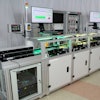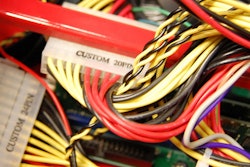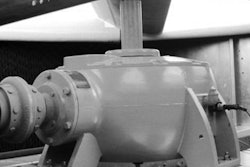When we think of the future of industrial manufacturing we think about everything being better, smarter and faster. Manufacturers want to meet production goals as efficiently as possible, with little to no downtime. Having a thoughtful maintenance strategy in place can reduce equipment failures and result in continuous uptime and cost savings. As we move into the Industrial Internet of Things (IIoT), better, smarter and faster maintenance requires a proactive strategy.
Dupe Equipment Lifecycles with Proper Maintenance
Most industrial operators acknowledge the merits of preventive equipment maintenance. While different operators apply different maintenance approaches, they all tend to converge on the same landing point – some preventive maintenance is better than none.
At some point, equipment failure is inevitable. And all equipment follows a life cycle that has a beginning, middle and end. New equipment will experience early-life failures. These are failures often associated with installation errors or misapplication of equipment. These early-life issues typically get resolved quickly and there is an extended period of functional operation, where unexpected failures are rare and occur at prolonged intervals. This is the middle or “sweet spot” of operational performance and where operators hope to extend equipment life for as long as possible. Proper preventive maintenance can help to achieve this.
Finally, the last stage signifies the end of the equipment’s useful life. This is the stage where operators can no longer overcome the costs associated with an aging asset. Much like cars, industrial equipment’s life expectancy is based on age and usage. However, well-maintained equipment will almost always last longer.
Here are some tips to zero in on good preventive maintenance:
- Use preventive maintenance to extend the asset’s life and get the longest utility from the equipment at the lowest possible cost.
- A good preventive maintenance program varies for different machines and applications. A 24/7 high-tech chemical processing facility will have different maintenance requirements than a small, one-shift woodworking operation.
Lay the Foundation for Maintenance with the Right Goals
A preventive maintenance program generates the best results when manufacturers establish specific goals and objectives. This requires operators to spend time understanding and documenting their targets.
Operators should choose a service provider that understands their goals. The right provider will ask probing questions about the desired outcome to support the manufacturer’s requirements. If a company can’t tolerate the unpredictable cost of failures, a basic, set schedule preventive maintenance agreement may not suffice. A comprehensive risk transfer maintenance agreement that includes all planned and unplanned maintenance may be a better option. Of course, both parties should first agree upon cost and terms.
The Power of Three Maintenance Types
There are three core maintenance approaches companies choose from. The first is reactive maintenance, which is still highly prevalent in many manufacturing industries. When a plant runs equipment until it fails and then decides to repair or replace the equipment that is considered reactive maintenance. The second type is preventive maintenance, where operators conduct basic care to minimize the downtime associated with unexpected failures for as long as possible. Lastly, there is predictive maintenance, where the objective is to detect imminent failure and take preventive measures at the last possible moment.
Reactive Maintenance – The Bare Minimum
Reactive maintenance occurs when a plant does not have a preventive or predictive maintenance program in place. Manufacturers that use reactive maintenance ignore preventive measures altogether and deal with failures as they occur. Reactive maintenance typically results in the highest ownership cost for industrial rotating equipment.
Preventive Maintenance – Scheduled Checks
Preventive maintenance includes performance checks on equipment to reduce the likelihood of failure. At a minimum, a preventive maintenance plan should include a defined scope of work, the parts and tools required, and the needed skills for a particular task at specified intervals. For instance, an operator’s manual instructs the user to perform maintenance tasks every 2,000 hours.
The concept of risk sharing is a key component of a preventive maintenance approach. With a shared-risk maintenance agreement in place, the service provider performs routine maintenance based either on the calendar or operating hours of the equipment and addresses all failures that occur during the contracted period. If downtime occurs, the agreement shifts failure risks to the service provider, giving manufacturers a safety net.
Predictive Maintenance – The Future
While reactive and preventive maintenance are more common, the ideal maintenance program is predictive. Using diagnostics and analytics improves equipment life-cycle costs, and it’s the future of industrial processes. Data-driven technology associated with IIoT makes equipment more intelligent and systems more productive. But accurately predicting equipment failure requires extensive historical data and sophisticated real-time monitoring. As data from equipment becomes available, the library of information strengthens and offers operators intelligence they can use to identify issues before they arise.
Standards for preventive maintenance are critical to a successful operation. The ideal preventive maintenance program helps plan for scheduled downtime, extends the useful life of equipment, reduces the ownership cost and helps organizations continue reliable operations.
Greg Kryshtalowych is the Director Global Service Operations at Ingersoll Rand.























